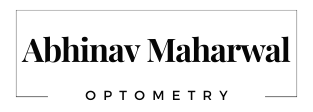Myopia Spectacle Lenses
Myopia Spectacle Lenses
What is Myopia?
Myopia, commonly known as nearsightedness, is a refractive error of the eye where close objects can be seen clearly, but objects at a distance appear blurry. This condition occurs when the eyeball is too long or the cornea (the clear front part of the eye) is too curved. As a result, light entering the eye is focused in front of the retina instead of directly on it.

- Blurred vision when looking at distant objects.
- Squinting to see clearly.
- Frequent headaches due to eye strain.
- Difficulty seeing clearly while driving or participating in sports.
- Children moving too close to TV or holding books to close to face.
- Genetics: Myopia often runs in families, and if your parents are nearsighted, you are at a higher risk.
- Environmental factors: Prolonged close-up activities, such as reading or using digital devices for extended periods
Myopia tends to develop during childhood and may progress until the late teens or early twenties when the eyes usually stabilize.
slowing myopia by 1 diopter should reduce the likelihood of a patient developing myopic maculopathy by 40%.
it's essential to manage myopia, as high levels of nearsightedness can be associated with an increased risk of eye conditions like retinal detachment, Myopic Maculopathy , Tessellated Fundus , glaucoma and cataracts.

Myopia control helps in:
- Better vision when uncorrected and corrected: lower myopes have better visual performance, even when corrected.
- Better options for, and outcomes from, surgical myopia correction: it can’t just be ‘fixed’ with laser surgery because once the eye grows too long, this can't be reversed and the eye health risk will always be a concern.
- Reduced risk of visual impairment and Eye Conditions: Like retinal detachment, Myopic Macular Degeneration , Tessellated Fundus, glaucoma,and cataracts.
Stellest lens by Essilor
A advance spectacle lens with around 1021 Small lenslets, arranged in form of 11 circular rings, which child needs to wear like normal spectacles. Research shows a Decrease in myopia progression by 67% on average. Equipped with H.A.L.T technology , these lenses focus the peripheral retinal rays in front of the retina. This signal Allows the eye not to elongate.

MiYOSMART Spectacle Lenses by HOYA
The latest research in myopia control has found that a new spectacle lens design known as DIMS (defocus incorporated multiple segments) is also effective in slowing the growth of the eyeball using similar optics as custom contact lenses. DIMS lenses, known as Hoya MiYOSMART, slow progression by 60% on average, offering children a non-invasive myopia control option.

MyoCare Lenses by ZEISS
These lenses make use of accommodative lag management. Similar to progressive lenses, the top of the lens provides clear distance vision while a bottom active zone simultaneously supports near vision tasks and helps to reduce myopia progression.
Feaures of these lenses:
1. Myopia Management
2.Myopia Control
3.Good Aesthetics

Hear From The Expert
The Good News About Myopia:
There are numerous myopia control treatments now available for children and teenagers. These treatments can’t promise to stop myopia progression but have much evidence for slowing it down. By slowing down myopia progression, your child or teenager is likely to end up with a lower final amount of myopia than they would have without treatment.

Hear From Our Clients
Get one step closer to a better vision
Click the link below to schedule an appointment and experience our exceptional service firsthand. We look forward to providing you with personalized care and addressing all your vision-related concerns.
Join Our Newsletter
Stay in touch with us to get latest news and special offers.
Address
A-9, 10, University Marg, Bapu Nagar, Jaipur, Rajasthan 302015
Call Us
+91 80058 51260



